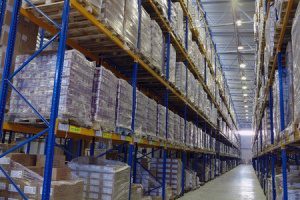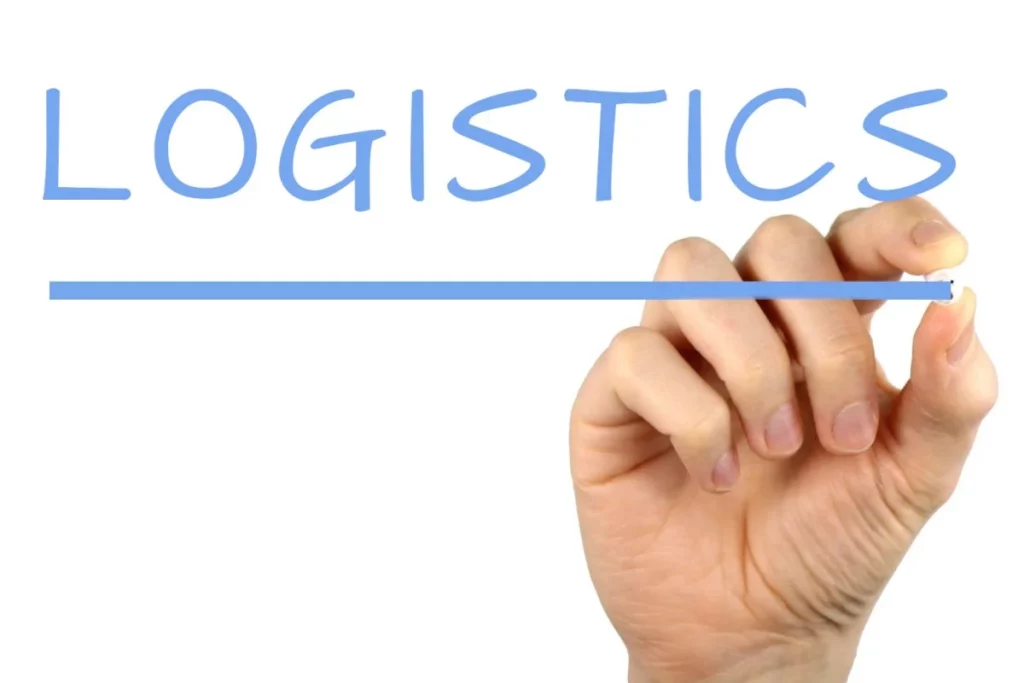Your company’s primary business goal is to increase your profits. To this end, you take many steps every quarter to create a positive impact on your bottom line. Many profit increasing measures are fleeting, only benefiting you for a few weeks or months. Short-term actions are great for getting your business productivity moving in the right direction. However, you must focus on long-term strategies order to achieve sustained business growth for your company. To this end, building a relationship with a logistic management specialist is a step that you must take. Continue reading
Tag Archives: logistics toronto
Logistics Solutions for the Hotel and Hospitality Industries
 In the corporate world, the catch-all term “logistics” describes any and all activities involved in the transportation and warehousing of goods.
In the corporate world, the catch-all term “logistics” describes any and all activities involved in the transportation and warehousing of goods.
Commercial logistics adopted the concept from its military application, where the procurement, maintenance and transportation of materials, facilities and personnel are all of equal importance. In essence, logistics is the science of supply chain management.
Providing logistics solutions to the hotel and hospitality industries is a very particular discipline, one that’s practiced almost as an art form at 3PL Links.
Continue reading
Why Logistics Consulting is an Important First Step
 External, third-party consultants must bring expertise that enables the solving of a specific issue or series of issues within a set budgetary resource that cannot be addressed internally. Certainly, logistics consulting is one such skillset; it’s a necessary function of most businesses, on which few companies maintain internal experts.
External, third-party consultants must bring expertise that enables the solving of a specific issue or series of issues within a set budgetary resource that cannot be addressed internally. Certainly, logistics consulting is one such skillset; it’s a necessary function of most businesses, on which few companies maintain internal experts.
The word “consult” has a Latin root meaning “to discuss,” and that’s all most consultants do – they chatter away until you’ve answered all your own questions, then formalize that input, take credit for it, and send out a bill. Logistics consulting most emphatically does not fall into this category.
As noted, the only time an individual or company really benefits from expert third-party consultation is when highly specialized, technical expertise is a prerequisite and when no internal knowledge-base is available to resolve the problem. Because logistics concentrate on such specific areas, few companies have their own in-house authority.
Continue reading
5 Reasons You Should Consider Warehouse Services from 3PL Links
 When your business is transporting goods from one place to another, it is crucial you have a secure warehouse to place these goods. The warehouse should be guarded around the clock to ensure your goods are not vandalized, damaged or stolen; and if you have special storage needs, such as climate control, the warehouse should be equipped to offer the service.
When your business is transporting goods from one place to another, it is crucial you have a secure warehouse to place these goods. The warehouse should be guarded around the clock to ensure your goods are not vandalized, damaged or stolen; and if you have special storage needs, such as climate control, the warehouse should be equipped to offer the service.
If goods get damaged or a theft occurs, it is not just a monetary loss to your company, it is also is loss of credibility in front of your customers due to delayed deliveries. These are issues that can cost your company dearly, both in terms of money and reputation. You should choose your warehousing partner with care. Without the right warehouse services, your business can suffer in many different ways.
Below are 5 reasons why you should choose professional warehouse services offered by 3PL Links.
- Expertise and Experience
3PL Links employs highly trained professionals who ensure all your logistics supply chain requirements are handled seamlessly. The company brings a wealth of knowledge and expertise and hence, is equipped to provide warehousing solutions to suit your needs and budget. This storage method minimizes risks and also ensures expedient and fast service. You never have to contend with inexperienced and untrained employees which increases the risk of loss and damage. Continue reading
When you should Consider Consulting with a Third Party Logistics Provider

Any company that sells products must have a reliable delivery system in place to ensure that all items are delivered to customers on time and in perfect condition. For this to be possible, the delivery system must include warehousing, picking, packing, and shipping operations, which are gathered under the generic name of logistics.
Unfortunately, managing logistics is a major challenge for many businesses. Without streamlining logistics operations, a company can easily run into cost overruns, which will negatively impact its overall activity. How can you reduce the risk of cost overruns and outright failure? By simply consulting with a third party logistics provider, or 3PL. Continue reading
3PL Supply Chain Management Metrics to Look at
 Supply chain management metrics are designed to give your company the analytical tools to assess the performance of each piece of the supply chain. The matrices should be straightforward to use, but aligned to specific business requirements. Three important matrices critical to effective supply chain management and bottom lines are: carrying cost of inventory, inventory to sales ratio, and inventory turnover.
Supply chain management metrics are designed to give your company the analytical tools to assess the performance of each piece of the supply chain. The matrices should be straightforward to use, but aligned to specific business requirements. Three important matrices critical to effective supply chain management and bottom lines are: carrying cost of inventory, inventory to sales ratio, and inventory turnover.
Carrying Cost of Inventory
The carrying cost of inventory is one of the supply chain management metrics that measures the costs of keeping inventory, whether over the short- or long-term. Carrying cost of inventory can help you to determine expected profits on current inventory, and if more product, or less, is required to ensure income levels or to cover expenses. It can also impact more strategic decision-making like sourcing. Continue reading
Should you Consider Supply Chain Segmentation?
 Business success is contingent on maintaining a competitive edge. Maximizing supply chain activities allows businesses to operate at highly proficient and effective levels. Supply chain management integrates all facets of business operation and production, including product development, procurement, construction, and logistics. Businesses are discovering that they are unable to maximize customer value using a single supply chain strategy. The same supply chain stratagem will satisfy some customers but the desires of other consumers may go unfulfilled, and for others, the costs may be too great. As a business owner, should you consider supply chain segmentation? The answer is yes.
Business success is contingent on maintaining a competitive edge. Maximizing supply chain activities allows businesses to operate at highly proficient and effective levels. Supply chain management integrates all facets of business operation and production, including product development, procurement, construction, and logistics. Businesses are discovering that they are unable to maximize customer value using a single supply chain strategy. The same supply chain stratagem will satisfy some customers but the desires of other consumers may go unfulfilled, and for others, the costs may be too great. As a business owner, should you consider supply chain segmentation? The answer is yes.
Supply chain segmentation means grouping services or faculties together to meet an explicit set of requirements. Segmentation allows businesses to meet their customer needs at the lowest cost. It provides an organizational framework that consistently delivers value and business control the complete life progression of a product. Supply chain segmentation generally follows these steps:
Step One – Group Products and Delivery Channels
The first step for segmentation involves grouping products and delivery methods and creating a matrix, where all combinations are represented. Each combination is considered an individual supply chain. The distinct supply chains are rated using business revenue factors of gross profitability and sales. Continue reading
LTL Industry Best Practices for Cross-Border Shipping
 Cross-border shipping is an integral part of the global economy and an especially important component of the commercial relationship between the United States and Canada. The United States Census Bureau reported that in May of 2014 the U.S. imported over $30 billion in goods from Canada. If your business is looking to engage in any kind of cross-border shipping, it is important that you ship your goods in an efficient way that also complies with all the pertinent regulations for this type of commerce.
Cross-border shipping is an integral part of the global economy and an especially important component of the commercial relationship between the United States and Canada. The United States Census Bureau reported that in May of 2014 the U.S. imported over $30 billion in goods from Canada. If your business is looking to engage in any kind of cross-border shipping, it is important that you ship your goods in an efficient way that also complies with all the pertinent regulations for this type of commerce.
Include the Proper Documents
The first step in making sure that you can properly engage in cross-border shipping is getting your documents in order. Important things that you need to have include:
- Your bill of lading that is filled out with all the necessary information
- Evidence of the purchase of the goods, such as an invoice or purchase order
- A license to import/export: this is usually only required for products that are regulated, like firearms, tobacco, etc.
Checklist for Efficient Global Supply Chain Management
 Efficient supply chain management on a global scale is a handful for even the most logistics-savvy companies. When you are entangled in the global market there are a lot of blind corners and gray areas. There is going to be a lot of days that you wish that the straight line you drew between two points on the whiteboard was a reality. With that being said, global supply chain management is a difficult yet not impossible task. Here is a checklist of tasks that every business needs to follow to maintain the efficiency of their global supply chain.
Efficient supply chain management on a global scale is a handful for even the most logistics-savvy companies. When you are entangled in the global market there are a lot of blind corners and gray areas. There is going to be a lot of days that you wish that the straight line you drew between two points on the whiteboard was a reality. With that being said, global supply chain management is a difficult yet not impossible task. Here is a checklist of tasks that every business needs to follow to maintain the efficiency of their global supply chain.
Global Supply Chain Management Checklist
[ ] Always Start With Risk Management: Operational Risk Management is more than just a buzzword. It has to be the starting point of every logistics operation. While it may not be possible to disaster-proof every movement, you cannot know what contingencies you will need to prepare for if you do not take the time to consider the events that will have the most disruptive effects upon your operations. You need to consider how you will do business if your critical systems are rendered inoperable, what steps to take to respond to these catastrophes, and how to resume operations as quickly as possible. Continue reading
5 Common Mistakes in Supply Chain Management
 Studies show that the supply chain accounts for over half of the total cost of production. Successful management of the supply chain therefore requires the ability of a company to recover quickly from disruptions. The supply chain is even more complex than it was two decades ago so it is critical that you remain vigilant, steer clear of common mistakes and appreciate the benefits of proactive management.
Studies show that the supply chain accounts for over half of the total cost of production. Successful management of the supply chain therefore requires the ability of a company to recover quickly from disruptions. The supply chain is even more complex than it was two decades ago so it is critical that you remain vigilant, steer clear of common mistakes and appreciate the benefits of proactive management.
That said, here are 5 common mistakes in modern-day supply chain management;
1. Prioritizing functions by spend
Quantifying by spend is probably the most common mistake in supply chain management. Simply put, you look at your suppliers and prioritize functions based on who supplies most of your goods and services. So, even if you have 20 suppliers, you’ll want to prioritize say five suppliers whom you’ve always spent 80 percent of your budget on. This strategy worked well until fifteen years ago when outsourcing was proliferated. Today, supply chains come in layers where you source from several suppliers.
You can no longer rely on a single source for your parts otherwise these parts would become a single point of failure in the supply chain. Continue reading


